If at all possible, read over the theme song of Mission Impossible
On May the 6th 2016, agents Hajniness and Dr.D. carried out sucessfully mission code-name Operation Wedding. With the support of 125 of the most special operatives of our agency, they managed to stop the destruction of Valencia (it's still there), get married, and get a whole room of people to wear orange items and look gorgeous in them.
All agents had secret missions. Somebody bit into a lemon. Somebody hugged a pillar. Somebody stole a shoe. They all enjoyed it, and took a selfie with the groom and the bride.

The H.A.J.D.A.N. agency thanks all those agents that risked their lives during the operation. Agents Hajniness and Dr.D. have asked us to transmit their appreciation to all those agents: you made mission a success, and a lot of fun.
The appreciation extends as well to those special agents that could not participate in the operation, because of being engaged in other secret missions of their own. We missed you.
During the operation, agent Hajniness' identity was revealed.
The secrecy of the mission had been compromised. In order to keep her rogue status, our sources state that agent Hajniness has arranged a new identity for herself. One month later a passport was issued in Finland under the name Hajnalka Collado.
We suspect that is her current name.
You probably didn't realize, but the agency had a spy documenting the operation.
Unfortunately, agents Hajniness and Dr.D. intercepted the documents and managed to keep them hidden from us until now. We have currently managed to recover them. You will be able to see the full graphic report clicking on the image below.
After the mission, it took a long time until our sources found again the trace of agents Hajniness and Dr.D. The next time they were seen, allegedly in Operation Honeymoon, was in the Republic of Philippines.
Our informant said they were seen infiltrating a sunken ship from the II World War, in a scuba-diving suit. We do not know what they retrieved from it.
This is all the information we have managed to gather so far You might be able to retrieve some more out of agents Hajniness and Dr.D. In any case...
We have a mission for you.
We have received information that two of our top agents are planning a rogue mission. Less than 20 hours ago our informants intercepted a communication between agents Hajnalka "Hajniness" Zigmund and Daniel Collado-Ruiz (a.k.a. "Dr.D."), with the following details:
Code-name: Operation Wedding
Time: May 6th 2016 at 19:00
Location: Hotel Ad Hoc Parque, Bétera, Valencia, Spain
Your mission, should you choose to accept it, is to infiltrate the premises and take part in the event they are organising. Blend in and pretend to enjoy as much as possible.
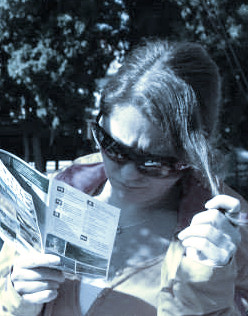
Real name: Hajnalka Zigmund
Last seen: 3 days ago
Strengths: Expert in infiltration and extraction. Blends into any group in seconds. Manipulates knives at ease
Weaknesses: Gets distracted by cats or flowers. Do not feed her wheat after midnight (or before)
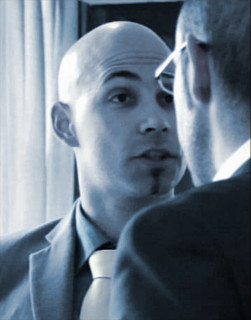
Real name: Daniel Collado-Ruiz
Last seen: 2 days ago
Strengths: Master of deception. Seems to have hypnotic powers. Has experience with explosives
Weaknesses: Easily disarmed if you give him a guitar. Might get violent if you put cucumber in his drink
The agency will prepare your documentation, so that you can go undercover during the mission. We also need to know if you will be bringing a support companion agent, so that we can generate a fake ID for them as well.
You are kindly requested to confirm through this link until April 10th, so that we have enough information about your plans.

You are expected to infiltrate the premises at 19:00. Be careful: we have many infiltrated agents. Try to get acquainted with as many of them as possible: it might become useful later in your mission.

The agency has prepared for you a short dossier with additional information about the dress code of the event.
The wedding ceremony will start at 19:30 sharp. The expected duration is of around 60 minutes. Stay tuned for any suspicious activity.
After that, the guests will be invited to proceed to the cocktail, and after that to dinner. Our reports show that food will be plentiful. You have been warned.
After dinner there will be several hours of partying. Be prapared for dancing if the mission so requires. The party will begin around midnight, so make sure your escape plan is not too early.
You will receive more information in due time.
Since you are traveling to Valencia for the mission, the agency has organized a number of optional missions. You can choose to infiltrate, in order to learn more about the other agents. Agents Hajniness and Dr.D. will be there.
On Thursday May 5th agents can join for an evening drink and dinner, in Barrio del Carmen. This mission can double as night (and nightlife) tourism.
For the survivors of the main mission, a late (very late) lunch will be organized on Saturday 7th in Hajniness and Dr.D.'s safehouse, continuing with partying in Valencia and finishing in Umbracle.
Our most current reports show that agents Hajniness and Dr.D., if the weather provides, will be on Sunday in a nearby beach, with whichever survivers have made it through the whole mission, are still on the site, and do not have any other tasks to catch on with.
The venue is located in latitude 39.578736, longitude -0.476272. The address is Calle Botxí 6-8, in Urbanización Torre en Conill in Bétera, just 16 km from the centre of Valencia.




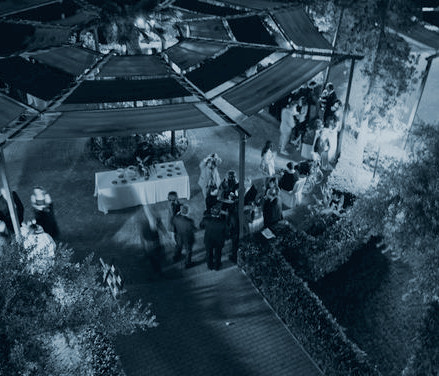
The location has free parking. If you have a vehicle, this is the easiest option. The easiest access is through road CV-35, taking the exit named “Betera” (CV-336). When you see the golf course on the right for the first time, take the roundabout to the left. Follow the road that is parallel to CV-336 until you reach the location.
It is also recommended to use the unencrypted communication channels (Facebook) to coordinate with some of the fellow agents, in order to get to the venue.
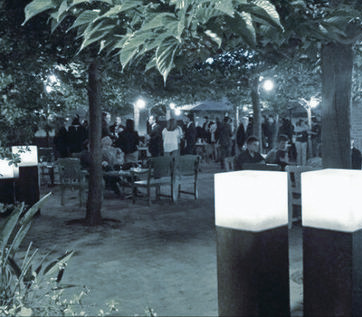
It is possible to reach the town of Betera through metro, and once there find a local taxi for the last streak. It is also possible to walk that distance, but beware: it’s almost 3 km.
All the rooms in the mission landing site have been pre-booked, so that you can use it as safe house during the mission (or before/later).
The prices for each room are (VAT included):
Double room -> 45€ / room / day
Breakfast -> 6.60€ / person / day
Triple room -> 56€ / room / day
Triple room with breakfast -> 76€ / room / day
To book the rooms, call +34 96 169 83 93 or send an email to adhocparque@adhochoteles.com, and persuade them that you're guests to Hajni and Daniel's wedding.
This document will help you prepare for your trip to Valencia. Read it carefully, and train well, to blend with the locals.
This document includes the following sections:
There are several ways to move around Valencia city:
Valencia is a flat city with a mild climate, and that makes it perfect for cycling. If you want to use this transportation mode, Valenbisi is the name of the public service for bicycle rental. They have stations all over the city.

You can find more information about their service in their website. The link provided is in English.
It is mainly designed for locals, but it has a temporary ticket that could be of your interest. It is a 7-day subscription to the service. The cost is 10€, and with that price you can use the bicycles as many times as you want, in durations of under 30 minutes, with penalties of 1€ the next half an hour if you do not return it, and 3€ for each hour you go beyond that. Most of Valencia – specially the center – is no further than 15-25 minutes cycling distance, and if you have a longer journey, you can always check in one of their stations, and take another bicycle.
Valencia also has an extensive bus network, operated by EMT Valencia. With bus you can go virtually everywhere in the city. During daytime, and depending on the line, the average waiting time is between 5 and 10 minutes in peak time, and between 10 and 20 minutes in off peak time. Some lines also operate during nighttime, in intervals of 30 minutes. There is also a network of night buses which operate in intervals of 30 to 45 minutes.

Check the EMT Valencia website for more specific information on the schedules (they have a section in English, look for the English flag on the top of the website). They also include information about other public transport. Night buses tend to run on time, but remember that day schedules are only an estimate!
Individual fares are of 1.50€ per ride, but multi-ticket options are normally better. Day or multi-day passes T1, T2 and T3 (for one, two or three) cost 3.70€, 6.30€ and 9.10€ respectively, and includes both metro (1 zone) and bus. A 10-journey travelcard costs 7.50€ (7.95€ if you plan on connecting between the bus and the train, in which case it’s called Bono Travelcard), plus 2€ for the reusable plastic card, and has no limit on when you have to use it. Single tickets can be purchased directly on the bus. All travelcards can be bought and topped up at kiosks, tobacconists and metro stations.
The Valencia metro (underground) system is called Metrovalencia. Itincludes underground trains, and tramways (lines 4 and 6). While the trains are substantially faster than buses, trams may be of the same speed of slightly faster.
The average waiting time inside the city can be of 5 to 10 minutes, and if you are reaching outside it can be of 15 to 20 minutes. Some of the outer lines can have longer waiting times, but we would not expect you to go so far in your visit!

You can check the timetables, or your best connection choice, at their website. You can switch to the English version of the website through the link on top. Be aware, Metrovalencia closes relatively early (from 22:30 to 23:30 depending on the line).
You can also download the metro map there, or see it in any Metrovalencia station. Single tickets (1-zone) cost 1.45€ per ride, but multi-ticket options are normally better. Day or multi-day passes T1, T2 and T3 (for one, two or three) cost 3.70€, 6.30€ and 9.10€ respectively, and includes both metro (1 zone) and bus. A 10-journey travelcard costs 6.85€ (7.95€ if you plan on connecting between the bus and the train, in which case it’s called Bono Travelcard), plus 1€ for the reusable cardboard card, and has no limit on when you have to use it. Tickets can be purchased at any metro station.
Another way of moving around in Valencia is, obviously by taxi. It is a more expensive alternative, but sometimes worth considering. Valencia Taxis are easily recognizable by their white color, the symbol "Valencia Area on the rear doors and a small green illuminated light on the roof when the taxi is free. In addition, a sign in Valencian "Lliure or in Spanish “Libre” (free) hung on the upper right of the windshield confirms availability. “Ocupat" or “Ocupado” show that the taxi is taken.

A ride between two central points can cost from 6€ to 10€, and going to an outer part of the city could reach the 12€. In taxis, it is not necessary to tip, but giving a few euros (also rounding up to some round figure) shows appreciation if the driver was friendly and had an interesting conversation.
There are two official languages in the region of Valencia: Spanish, and Valencian (a dialect of Catalan). Official documentation is written always in both languages, but some signs might be only in one of both. If you speak some Spanish and you are finding some trouble understanding, you might just be reading some Valencian!
Both are commonly used by the locals, many people are fluent in both of them, and everybody is fluent in Spanish. But do not get scared: everybody will obviously address foreigners in Spanish or English!
Most people understand some level of English, especially younger people. However, many Spanish people will be too shy in using their English. Nevertheless, they will surely make an effort to communicate with you, even if it is with sign language!
Some sentences for you to know. Finnish agents will have no problem reading out loud, since letters sound almost the same in Spanish as in Finnish. For other agents, we have included the pronunciation based on English phonetics:
| Sentence in English | Sentence in Spanish | Pronunciation |
| Good morning | Buenos días | Bweh-noss dee-ass |
| Good afternoon | Buenas tardes | Bweh-nass tar-dess |
| Good evening | Buenas noches | Bweh-nass notch-es |
| Hello | Hola | Awe-la |
| Goodbye | Adiós | Ad-yoss |
| See you later | Hasta luego | Ass-tah loo-a-go |
| Excuse me | Disculpe | Dees-cool-peh |
| Please | Por favor | Pore fah-bore |
| Thank you (very much) | (Muchas) gracias | (Moo-chass) grassy-ass |
| You’re welcome | De nada | Day nah-dah |
| Sorry | Perdón | Per-done |
| What’s your name? | ¿Cómo te llamas? | Koh-moh teh yah-mass |
| My name is... | Me llamo... | Meh yah-moh... |
| Pleased to meet you! | Mucho gusto! | Moo-choh goose-toh |
| How much is this? | Cuánto cuesta esto? | Coo-ann-toh coo-es-tah? |
| I (don’t) understand | (No) entiendo | (Noh) en-tee-in-dough |
| Do you speak English? | Hablas inglés? | Ah-blass in-glass? |
| My hovercraft is full of eels | Mi aerodeslizador está lleno de anguilas | Mee a-eh-roh-des-lee-zah-dor es-tah yeh-noh deh an-gee-lass |
And one in Valencian, for you to learn something:
| Sentence in English | Sentence in Valencian | Pronunciation |
| Wow, this is good! | Chè que bò | Check-eh baw |
Find here some basic information about day-to-day life in Valencia:
With average yearly temperatures of 25ºC in summer and 11ºC in winter, Valencia has a mild Mediterranean climate. In March, normal yearly averages are of about 9ºC at night and 19ºC during day. But beware: being close to the sea, Valencia has almost always a high humidity, so the temperature feels 2 or 3 degrees lower!

Spring is probably the time of the year with the most variable temperature range, so be sure to bring your (light) jacket and your sunglasses!
Commercial time schedules range from 10:00 to 13:30 or 14:00 in the morning and 16:30 or 17:00 to 20:00 or 21:00 in the afternoon, closing middays. Shopping centers have continous hours from 10:00 to 21:00. Most shops open Saturday mornings, and only some open Saturday afternoons. Sundays and festivities, shops are normally closed.

Restaurants and bars have very different schedules. It is normally very easy to find an open place at any time, Sundays included. Regular lunchtimes are between around 13:30 and 16:00, and dinner times are between around 20:30 and 23:00. Outside those times, it is sometimes difficult to find a place to eat, even in very touristic areas.
The Post office has a continuous schedule from 8:30 to 20:30, and Saturdays from 9:30 to 14:00. You can find it at Plaza del Ayuntamiento 24.
Most banks are open from Monday to Friday, from 8:30 to 14:00 or 14:30. Only some bank offices open on Saturday mornings. You can find automatic cash machines all around the city, available 24 hours, with most of them giving international service (Servired, 4B, etc.).
Most hotels, restaurants and shops in Valencia accept the most common credit cards: VISA, MasterCard, 4B, American Express, Access and Diners Club.
Regarding tipping: Waiters’ salaries are included in the price, so tipping is not necessary. However, it is common to leave some tip in restaurants and bars after a meal, normally rounding up to the next round figure. For a meal for several people, the quantity could be of several euros. When ordering drinks, it is not common to tip. In taxis, it is not necessary to tip, but giving a few euros (also rounding up to some round figure) shows appreciation if the driver was friendly and had an interesting conversation.

Most traditional Valencian cuisine is based around rice, with Paella as its most reknown dish. The most traditional Valencian version of the Paella is cooked with chicken and rabbit meat, although it is also quite common to find the seafood variety in restaurants, as well as the combined one.
Other traditional dishes are Arrós al Forn (oven-baked dry rice with pork ribs, sausages and potatos), Arros a Banda (dry rice cooked with fish soup on the fireplace, with seafood), Arrós Negre (Black Rice, cooked on the fireplace with squid ink and seafood), Fideuá (traditional pasta dish with seafood) or All i Pebre (seafood and eel stew).
When it comes to deserts, you can also find many alternatives. Oranges are Valencias main produce, although it should not discourage you from other sweets such as Rosetons, Arrop i Tallaetes, or Arnadí.
You can have your deserts together with a small glass of Mistela, a typical sweet moscatel wine.

You may also try some refreshing Orxata (sweet non-alcoholic drink elaborated with a local tuber) for a snack, especially during a hot afternoon.
For those times in which you may prefer a cocktail, you will want to try Agua de Valencia, common cocktail in the region mainly based on fresh orange juice and cava.

The Spanish electricity system uses the CEE 7/4 socket at 220V and 50Hz, very common in Europe.
The international access code for Spain is +34. To call outside of Spain, dial 00 followed by the relevant country code. City and area codes are required, so all telephone numbers are given complete.
Valencia is located in the center of the Spanish Mediterranean coastline. It is the third largest city in Spain after Madrid and Barcelona, and the capital of the autonomous community of Valencia, with a population of 809,267 within its administrative limits on a land area of 134.6 km2 52 sq mi). It is the 15th most populous municipality in the European Union. The urban area of Valencia extends beyond the administrative city limits with a population of between 1,175,000 and 1,564,145. Between 1,705,742 and 2,300,000 people live in the Valencia metropolitan area. Its timezone is Central European Time (CET) or GMT+1. The currency at the time of the mission is Euros (€).

Valencia was founded as a Roman colony in 138 BC. The city is situated on the banks of the Turia, on the east coast of the Iberian peninsula, fronting the Gulf of Valencia of Mediterranean Sea. Its historic center is one of the largest in Spain, with approximately 169 acres; this heritage of ancient monuments, diverse scenic sites and cultural attractions, makes Valencia one of the country's most popular tourist destinations for Spaniards and world travelers alike.

Among its most representative monuments are Valencia Cathedral, Torres de Serranos, Torres de Cuart and Llotja de la Seda (declared a World Heritage Site by UNESCO in 1996), and the Ciutat de les Arts i les Ciències (City of Arts and Sciences), an entertainment-based cultural and architectural complex designed by Santiago Calatrava and Félix Candela.
The Museu de Belles Arts de València houses a large collection of paintings from the 14th-18th centuries, including works by Velázquez, El Greco, and Goya, as well as an important series of engravings by Piranesi. The Institut Valencià d'Art Modern (Valencian Institute of Modern Art) offers both permanent collections and temporary exhibitions of contemporary art and photography.
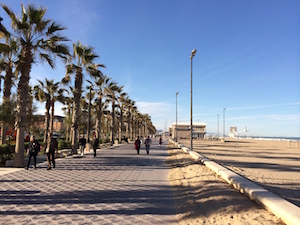
As for nature, you might want to explore as well Valencia's Beaches, The Albufera Nature Park and The Turia Gardens.
Valencia is integrated into an industrial area on the Costa del Azahar (Orange Blossom Coast). Its main festival, the Falles, is known worldwide, while the traditional Spanish dish, paella, originated here.
The best option depends on which airport you are most likely to land on:
The closest airport to the location is to fly directly to the Valencia Airport (code VLC). It is located 20 Km west from Valencia, and 15 km south of the location.

You will need to buy a special airport metro ticket (all regions), which costs 3,90€. If you are a big group of agents, you can buy a 10-ticket voucher, which has a heavy discount. Otherwise, return tickets will not help you: they require you to return the same day or the next.
You can also buy multi-ticket cards for better prices, although if you move only inside the city, you will only use 1-zone tickets, which are obviously cheaper.
If you plan on doing tourism, it might pay off to buy the Valencia Tourist Card. It includes public transport (airport included) and entrance to museums and touristic buildings. For more information, check:
www.valenciatouristcard.com/en/home
The last metro leaves the airport at 22:35. If you drive after 22:35, you will need to take a taxi. Taxis to different points of Valencia cost around 20€, depending on where you are going.

If you have a better connection to Barcelona, you can fly there and take the train or bus to Valencia.
Trains leave approximately each hour or hour and a half, and most of them take between three and three and a half hours. You can find more information on the timetables on their website (click on “welcome” on top for the English version).
The cost per trip is of between 30€ and 40€, with 20% discount for return tickets and 10% discount for people commuting from an airplane (maximum 25% altogether). If you buy well in advance, you can have additional discounts of up to 60%.
Most trains leave from Barcelona Sants. To get there from the airport, you will take the Rodalies train. It leaves from Terminal 2 every 30 minutes, and the journey takes about 20 minutes. It costs around 2,50€ (2 zones). Some of the more expensive train tickets to Valencia include this Rodalies ticket. You can find more information in the section “commuting trains” of the RENFE website.
If you are 3 or more, it pays off to buy a 10-ticket voucher. It also pays off if you are staying in Barcelona, and intend to use the metro there.

Once in Barcelona Sants station, follow the directions for the Valencia trains. They are normally next to the airport train, numbers 12 and 13. It is advisable to plan at least one hour and a half connection time, or a bit more if you do not want to stress. It is normally better to be conservative on the timing (leaving comfortable time for commuting): if you bought the full-price ticket, you can normally move it to an earlier timing.
You will most probably arrive in Valencia at the Valencia Joaquín Sorolla station. There is a direct connection with the metro station with the same name, several buses, and a free direct bus to the other main station, Valencia Nord.

If you have a better connection to Madrid, you can fly there and take the high-speed (AVE) train to Valencia.
The trains leave approximately each hour, and most of them take between one hour and a half and just under two hours. You can find more information on the timetables on their website (click on “welcome” on top for the English version).
The cost per trip is of around 80€ per trip, with 20% discount for return tickets and 10% discount for people commuting from an airplane (maximum 25% altogether). If you buy well in advance, you can have additional discounts of up to 60%.

All trains leave from Atocha station. To get there from the airport, take the 24 hour bus called Airport Express, Exprés Aeropuerto. It costs you 2€ and will take you directly there in about 40 minutes. Buses go every 15 minutes (every 35 minutes at night). Find more information in the following link.
www.emtmadrid.es/Aeropuerto
Once in Atocha station, you have to follow the directions for AVE (high speed train). Since both the Barajas airport and Atocha station are pretty big, you need to plan at the very least one and a half hours connection in total, if not more. On the other hand, it is better to buy the train ticket being conservative (leaving some comfortable time for commuting): if you are early and there is an earlier train, you can generally go to the ticket office and ask for them to change your ticket to a previous train.
You will most probably arrive in Valencia at the Valencia Joaquín Sorolla station. There is a direct connection with the metro station with the same name, several buses, and a free direct bus to the other main station, Valencia Nord.
This airport is the best option if you have a good connection and you plan on renting a car, since it is only 2 hours drive from Valencia.
As for connection with public transportation, the agency has not managed to gather much information. The connection is in any case not direct.

To take the train: the airport and the main train station are connected by public transport, but there seems to be no direct line, so two buses are needed. Line C6 can get you to the center, and from there you can reach the main train station. From there, you can get trains from RENFE, with costs of 15€ to 20€ and durations of between 1.5 and 2 hours.
To take the bus: services directly from the airport (with connection) run regularly, with fares around 26€ and durations of 3 to 4 hours. You can find more information at:
The airport of Castellón is located 100km north from Valencia. It is a very new airport, so it does not have many flights at the moment. If this is your best option to land, consult the agency for assistance in getting to Valencia.
You should have also been invited to a Facebook group. You can use that group to coordinate your travel plans with other agents, and other non-confidential information transactions.
The agency will deploy some weapons and other useful gadgets in the premises, and instruct you on how to make use of them. However, if you posess any type of technology that you think might be useful during the mission, do not hesitate in bringing it.
Some examples might be night vision goggles, communication devices, hidden recorders, jetpacks, or anything you agents can come up with.
As for presents: the best present you can give the new-weds (and it's already a lot) is to join them in such a special day. If you anyways want to give a present in addition, you can make a transfer in the account below:
IBAN: FI79 3939 0051 7527 64
BIC/SWIFT: SBANFIHH
Stay alert.